ESP KIA CARNIVAL 2007 Owner's Manual
[x] Cancel search | Manufacturer: KIA, Model Year: 2007, Model line: CARNIVAL, Model: KIA CARNIVAL 2007Pages: 1575, PDF Size: 44.86 MB
Page 963 of 1575
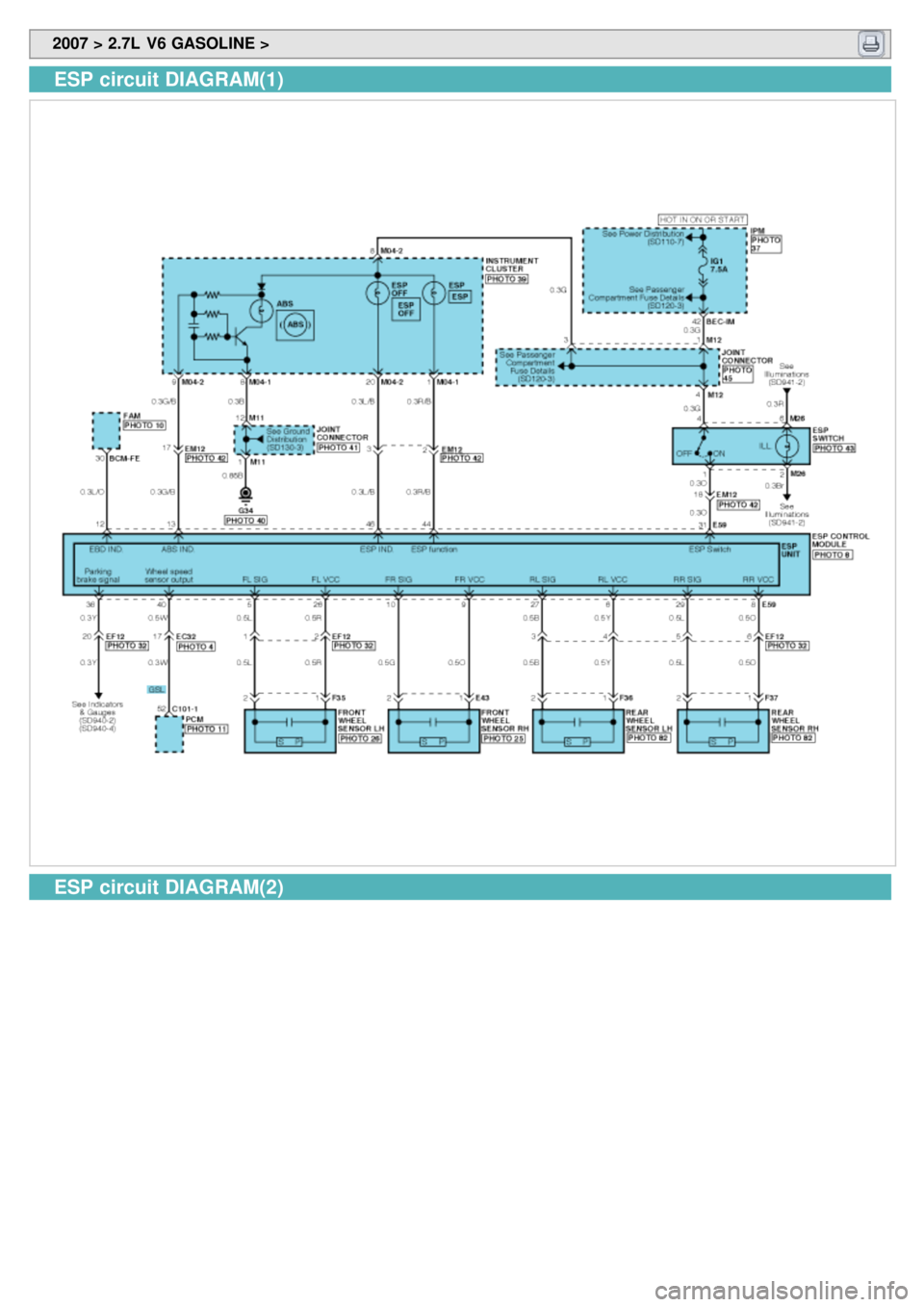
2007 > 2.7L V6 GASOLINE >
ESP circuit DIAGRAM(1)
ESP circuit DIAGRAM(2)
Page 964 of 1575
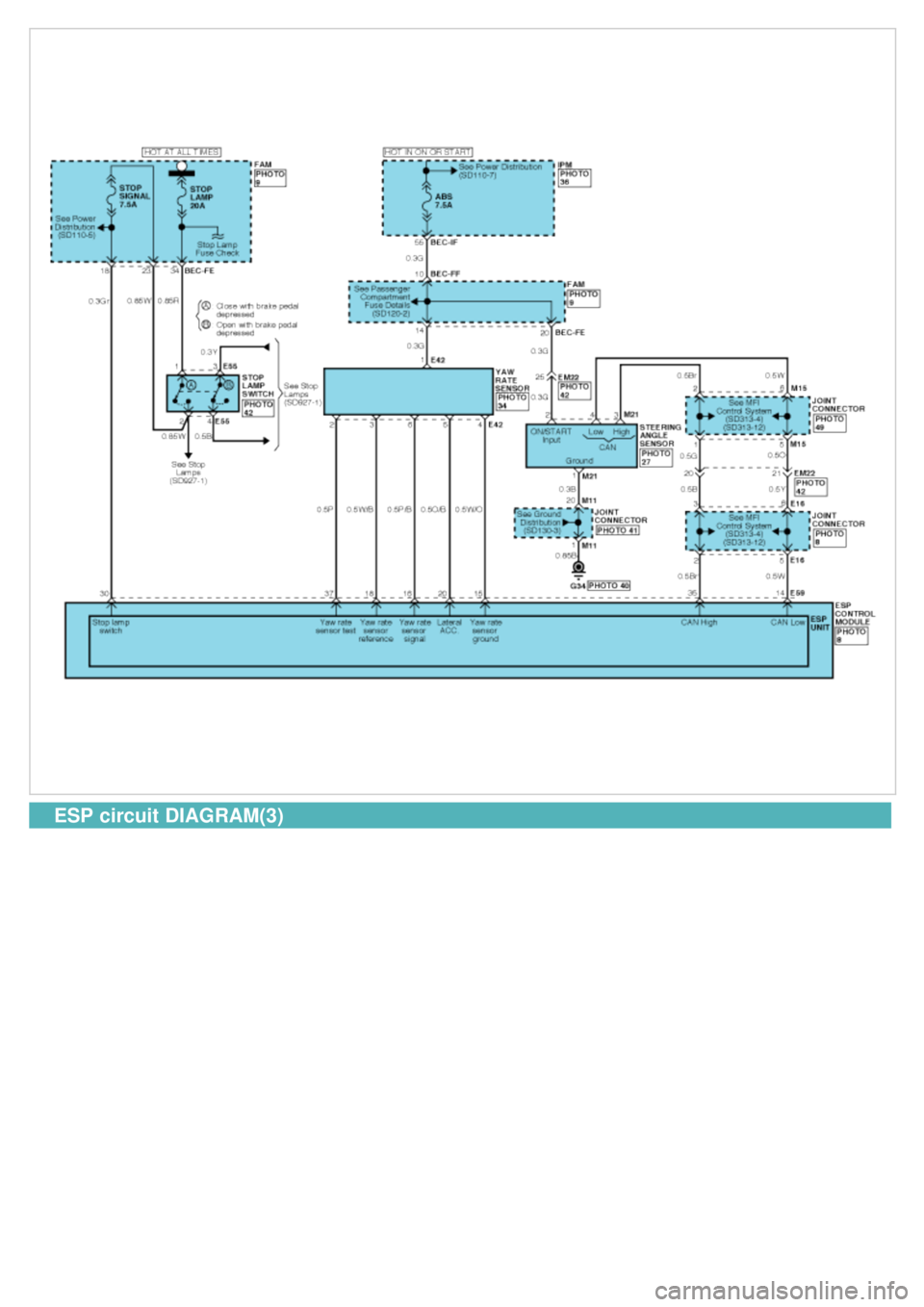
ESP circuit DIAGRAM(3)
Page 965 of 1575
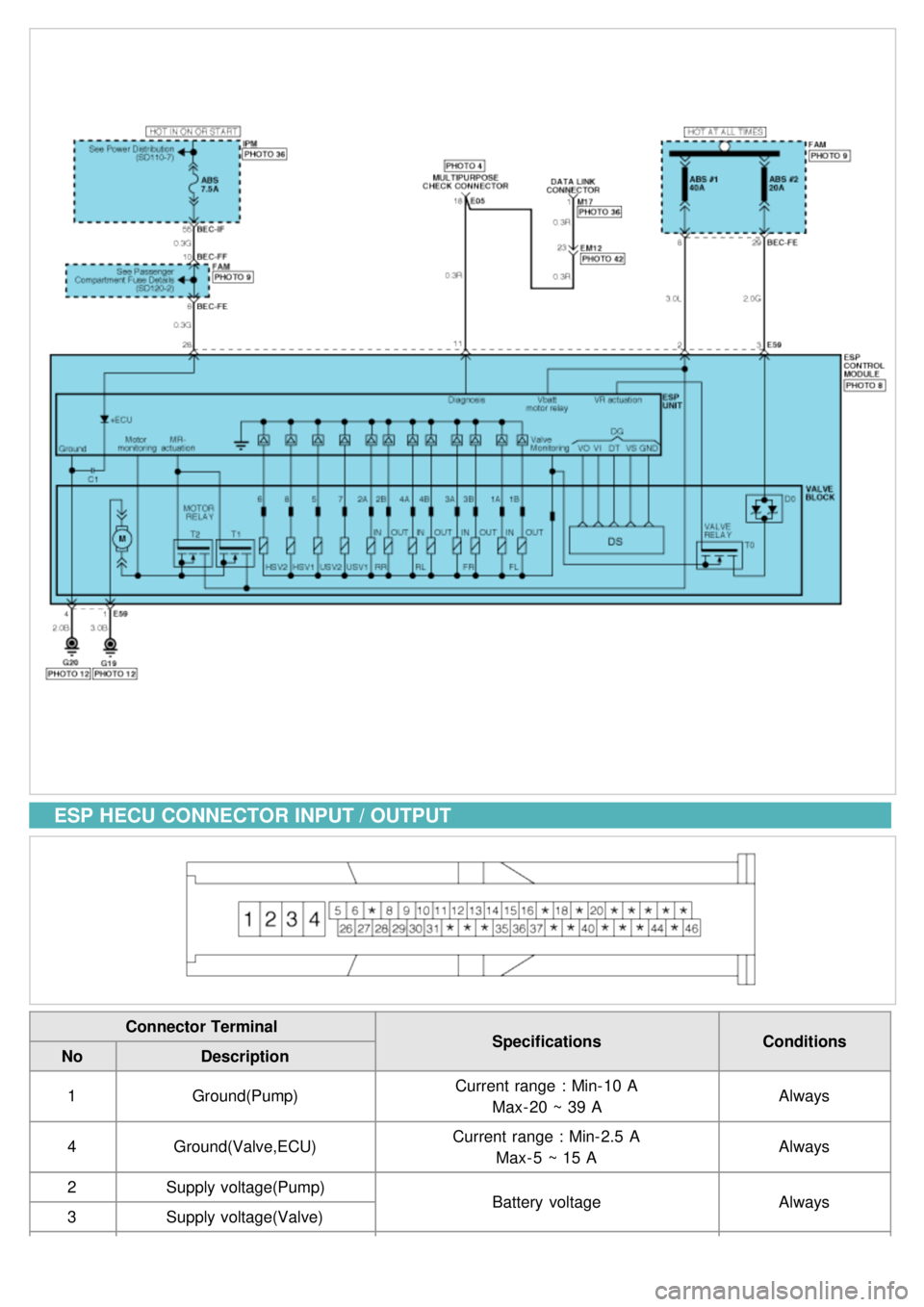
ESP HECU CONNECTOR INPUT / OUTPUT
Connector TerminalSpecificationsConditions
No Description
1 Ground(Pump) Current range : Min- 10 A
Max- 20 ~ 39 A Always
4 Ground(Valve,ECU) Current range : Min- 2.5 A
Max- 5 ~ 15 A Always
2 Supply voltage(Pump)
Battery voltageAlways
3 Supply voltage(Valve)
Page 966 of 1575
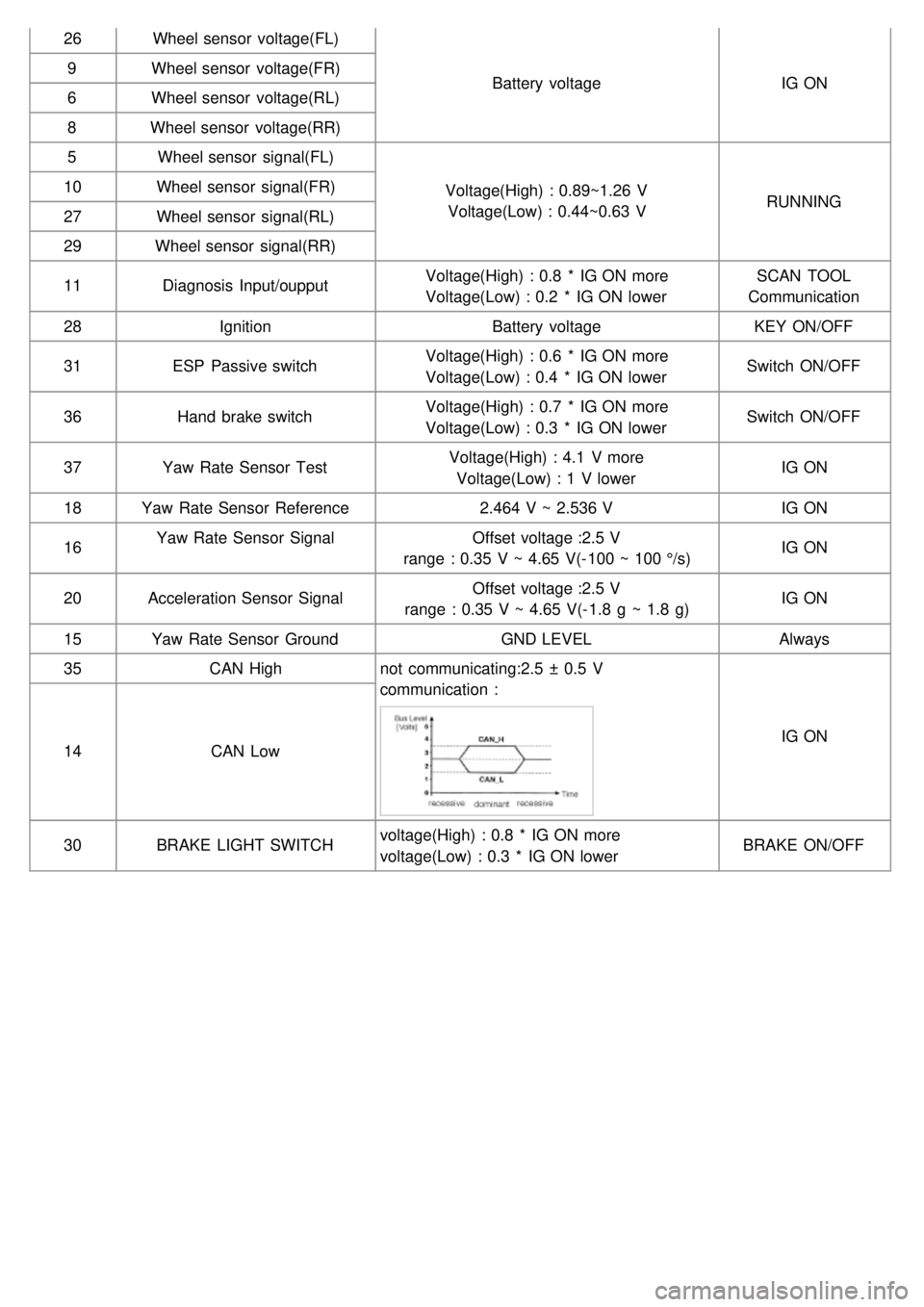
26Wheel sensor voltage(FL)
Battery voltageIG ON
9
Wheel sensor voltage(FR)
6 Wheel sensor voltage(RL)
8 Wheel sensor voltage(RR)
5 Wheel sensor signal(FL)
Voltage(High) : 0.89~1.26 VVoltage(Low) : 0.44~0.63 V RUNNING
10
Wheel sensor signal(FR)
27 Wheel sensor signal(RL)
29 Wheel sensor signal(RR)
11 Diagnosis Input/oupput Voltage(High) : 0.8 * IG ON more
Voltage(Low) : 0.2 * IG ON lower SCAN TOOL
Communication
28 Ignition Battery voltageKEY ON/OFF
31 ESP Passive switch Voltage(High) : 0.6 * IG ON more
Voltage(Low) : 0.4 * IG ON lower Switch ON/OFF
36 Hand brake switch Voltage(High) : 0.7 * IG ON more
Voltage(Low) : 0.3 * IG ON lower Switch ON/OFF
37 Yaw Rate Sensor Test Voltage(High) : 4.1 V more
Voltage(Low) : 1 V lower IG ON
18 Yaw Rate Sensor Reference 2.464 V ~ 2.536 VIG ON
16 Yaw Rate Sensor Signal
Offset voltage :2.5 V
range : 0.35 V ~ 4.65 V(- 100 ~ 100 °/s) IG ON
20 Acceleration Sensor Signal Offset voltage :2.5 V
range : 0.35 V ~ 4.65 V(- 1.8 g ~ 1.8 g) IG ON
15 Yaw Rate Sensor Ground GND LEVELAlways
35 CAN High not communicating:2.5 ± 0.5 V
communication :
IG ON
14 CAN Low
30 BRAKE LIGHT SWITCH voltage(High) : 0.8 * IG ON more
voltage(Low) : 0.3 * IG ON lower BRAKE ON/OFF
Page 967 of 1575

2007 > 2.7L V6 GASOLINE >
description of ESP
Optimum driving safety now has a name : ESP, the Electronic Stability Control.
ESP recognizes critical driving conditions, such as panic reactions in dangerous situations, and stabilizes the vehicle
by wheel- individual braking and engine control intervention with no needfor actuating the brake or the gas pedal.
ESP adds a further function known as Active Yaw Control (AYC) to the ABS, TCS, EBD and ESP functions. Whereas
the ABS/TCS function controls wheel slip during braking and acceleration and, thus, mainly intervenes in the
longitudinal dynamics of the vehicle, active yaw control stabilizes the vehicle about its vertical axis.
This is achieved by wheel individual brake intervention and adaptation of the momentary engine torque with no need
for any action to be taken by the driver.
ESC essentially consists of three assemblies : the sensors, the electronic control unit and the actuators.
Of course, the stability control feature works under all driving and operating conditions. Under certain driving
conditions, the ABS/TCS function can be activated simultaneously with the ESP function in response to a command
by the driver.
In the event of a failure of the stability control function, the basic safety function, ABS, is still maintained.
DESCRIPTION OF ESP CONTROL
ESP system includes ABS/EBD, TCS and AYC (Active yaw control) function.
ABS/EBD function : The ECU changes the active sensor signal (current shift) coming from the four wheel sensors to
the square waveform.By using the input of above signals, the ECU calculates the vehicle speed and the acceleration
& deceleration of the four wheels.And, the ECU judges whether the ABS/EBD should be actuated or not.
TCS function prevents the wheel slip of drive direction by adding the brake pressure and engine torque reduction via
CAN communication.TCS function uses the wheel speed sensor signal to determine the wheel slip as far as ABS
function.
AYC function prevents unstable maneuver of the vehicle. To determine the vehicle maneuver, AYC function uses the
maneuver sensor signals(Yaw Rate Sensor, Lateral Acceleration Sensor, Steering Wheel Angle Sensor).If vehicle
maneuver is unstable (Over Steer or Under Steer), AYC function applies the brake pressure on certain wheel, and
send engine torque reduction signal by CAN.
After the key - on, the ECU continually diagnoses the system failure. (self- diagnosis)If the system failure is detected,
the ECU informs driver of the system failure through the BRAKE/ABS/ESP warning lamp. (fail- safe warning)
Page 968 of 1575
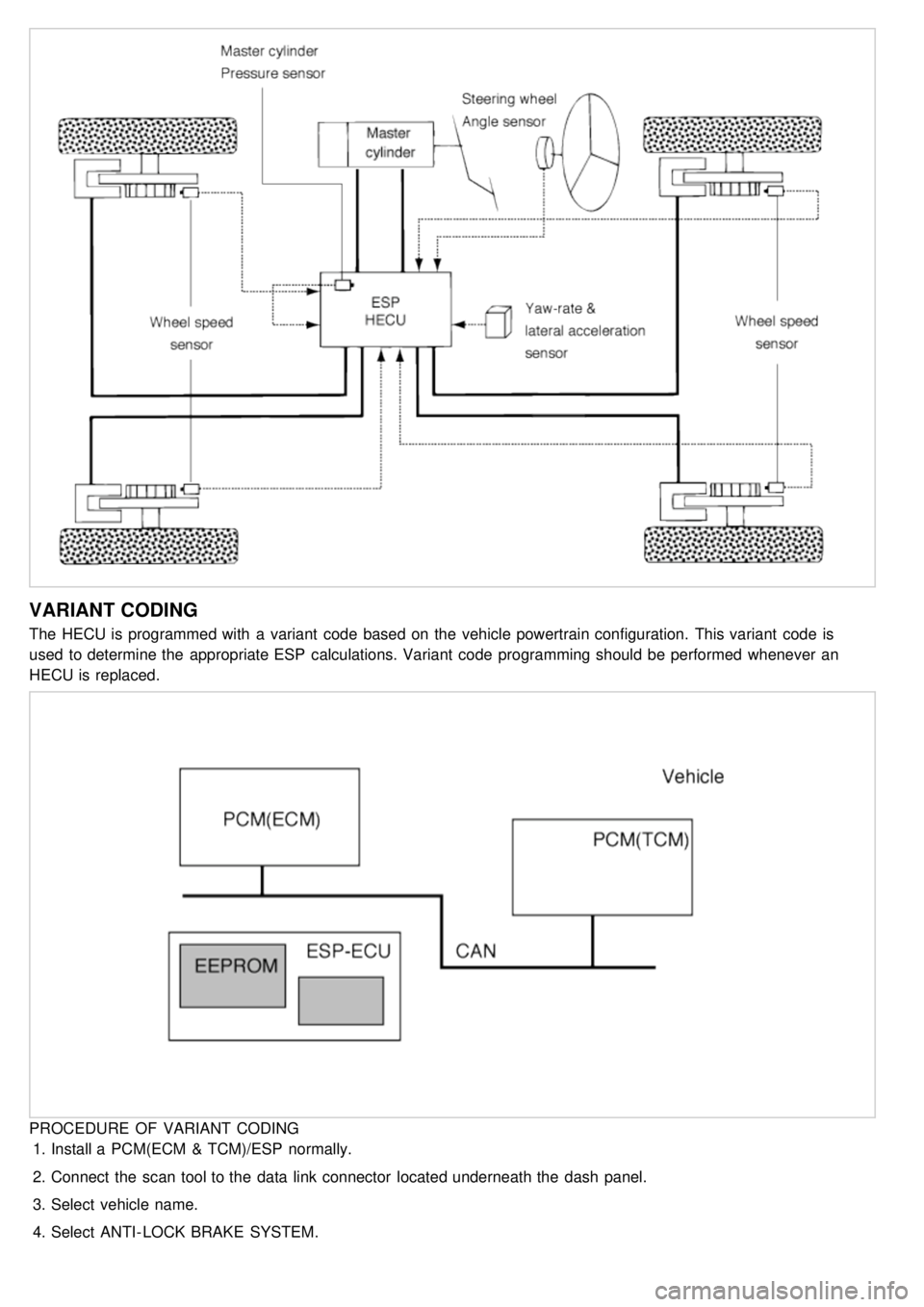
VARIANT CODING
The HECU is programmed with a variant code based on the vehicle powertrain configuration. This variant code is
used to determine the appropriate ESP calculations. Variant code programming should be performed whenever an
HECU is replaced.
PROCEDURE OF VARIANT CODING1. Install a PCM(ECM & TCM)/ESP normally.
2. Connect the scan tool to the data link connector located underneath the dash panel.
3. Select vehicle name.
4. Select ANTI- LOCK BRAKE SYSTEM.
Page 970 of 1575
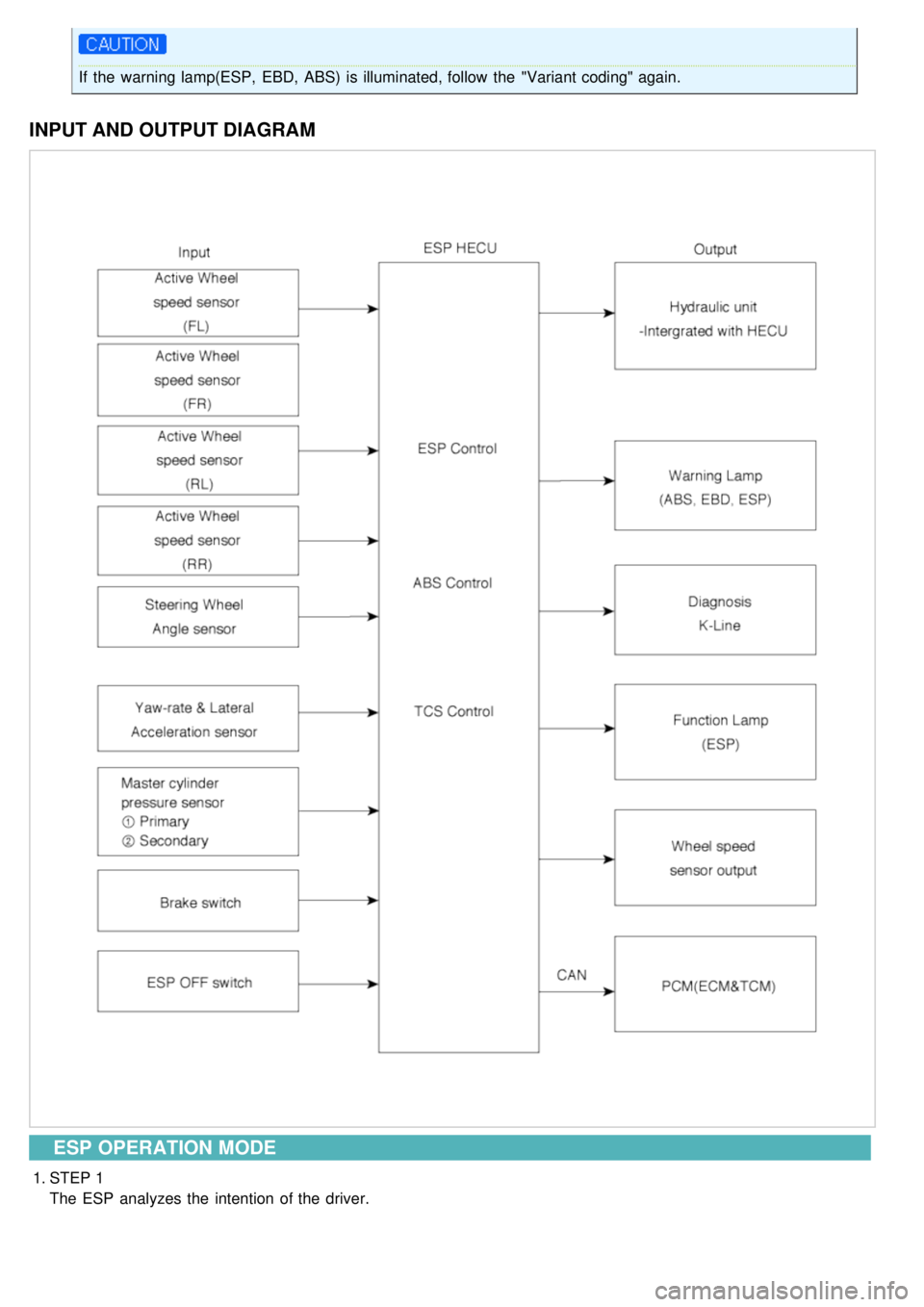
If the warning lamp(ESP, EBD, ABS) is illuminated, follow the "Variant coding" again.
INPUT AND OUTPUT DIAGRAM
ESP OPERATION MODE
1.STEP 1
The ESP analyzes the intention of the driver.
Page 971 of 1575

2.STEP 2
It analyzes the movement of the ESP vehicle.
3. STEP 3
he HECU calculates the required strategy, then actuates the appropriate valves and sents torque control requests
via CAN to maintain vehicle stability.
ESP OPERATION MODE
1.ESP Non- operation - Normal braking.
Inlet valve(EV)Outlet valve(AV)Pilot valve(USV)High pressure
switch valve(HSV)Pump motor
Normal braking OpenCloseOpenCloseOFF
EV : Inlet Valve
AV : Outlet Valve
LR : Rear left wheel
RF : Front right wheel
LF : Front left wheel
RR : Rear right wheel
PE : Pump motor
Page 972 of 1575
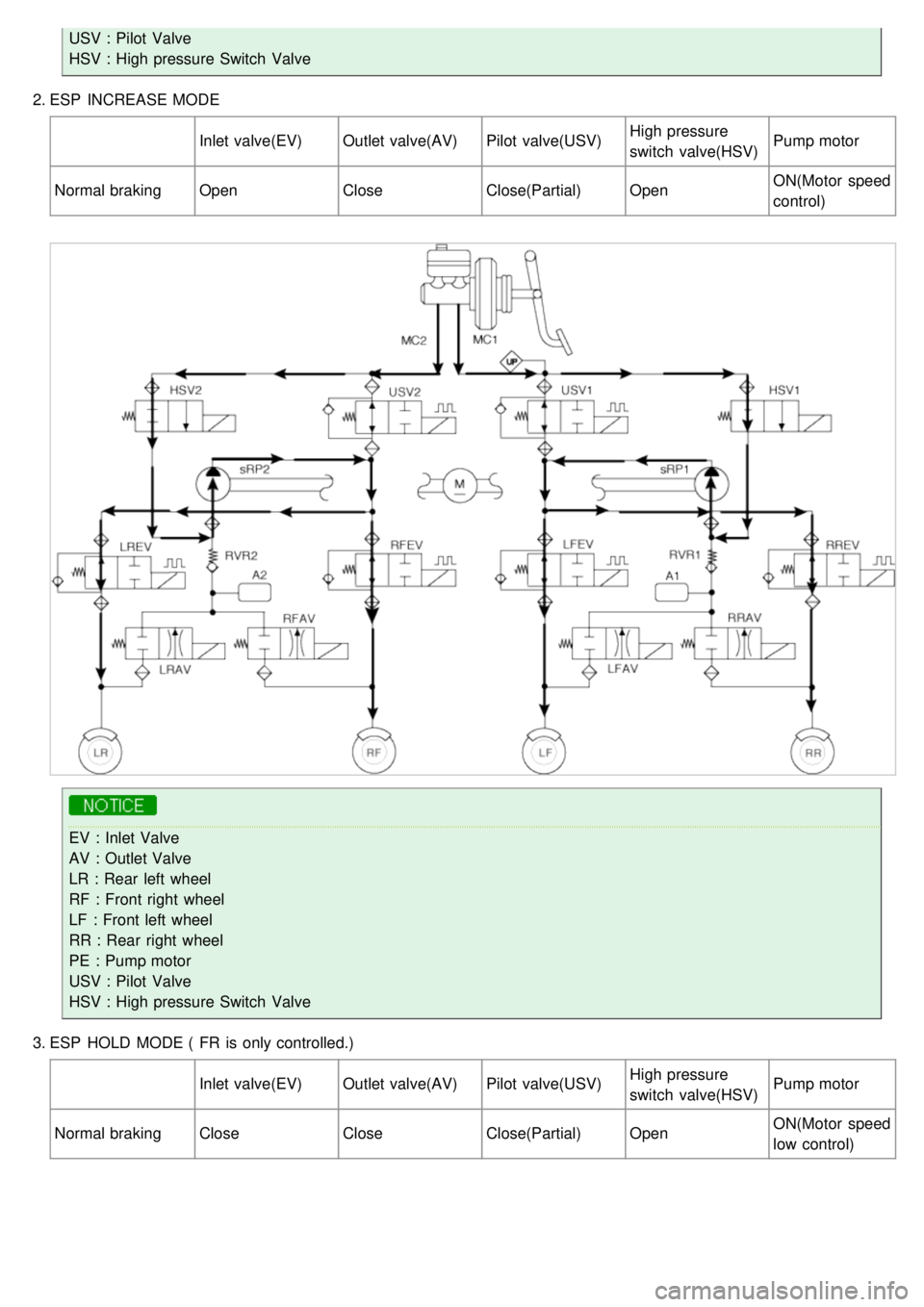
USV : Pilot Valve
HSV : High pressure Switch Valve
2. ESP INCREASE MODE
Inlet valve(EV)Outlet valve(AV)Pilot valve(USV)High pressure
switch valve(HSV)Pump motor
Normal braking OpenCloseClose(Partial)OpenON(Motor speed
control)
EV : Inlet Valve
AV : Outlet Valve
LR : Rear left wheel
RF : Front right wheel
LF : Front left wheel
RR : Rear right wheel
PE : Pump motor
USV : Pilot Valve
HSV : High pressure Switch Valve
3. ESP HOLD MODE ( FR is only controlled.)
Inlet valve(EV)Outlet valve(AV)Pilot valve(USV)High pressure
switch valve(HSV)Pump motor
Normal braking CloseCloseClose(Partial)OpenON(Motor speed
low control)
Page 973 of 1575
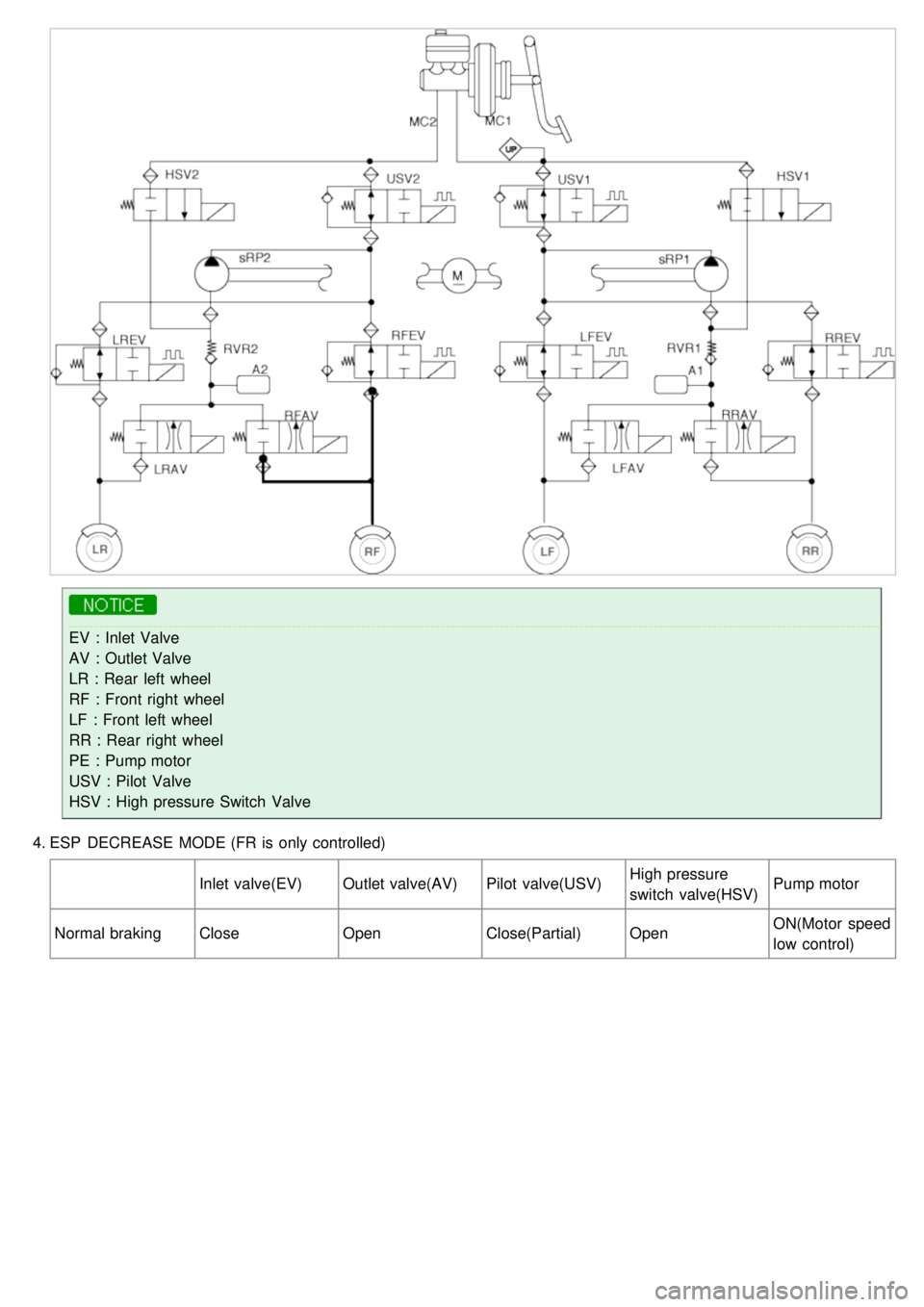
EV : Inlet Valve
AV : Outlet Valve
LR : Rear left wheel
RF : Front right wheel
LF : Front left wheel
RR : Rear right wheel
PE : Pump motor
USV : Pilot Valve
HSV : High pressure Switch Valve
4. ESP DECREASE MODE (FR is only controlled)
Inlet valve(EV)Outlet valve(AV)Pilot valve(USV)High pressure
switch valve(HSV)Pump motor
Normal braking CloseOpenClose(Partial)OpenON(Motor speed
low control)